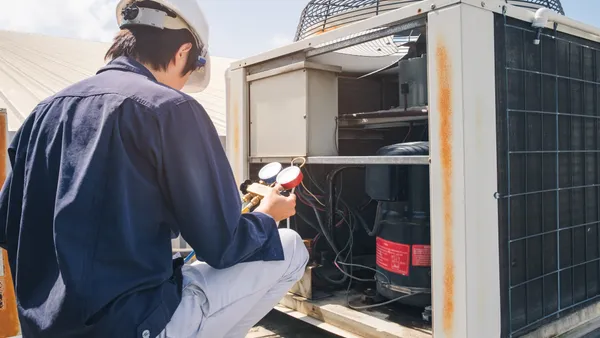Dive Brief:
- Construction of a new $2 billion terminal at the John Glenn Columbus International Airport is one step closer to getting started, despite friction between contractors and local union members.
- The Columbus Regional Airport Authority voted last month to approve another round of funds for the next phase of work on the John Glenn Columbus International Airport, to include $149 million for construction manager at risk Hensel Phelps. The money will go toward improvements such as roadways, electrical work, signage, underground utilities and preconstruction efforts.
- This will be the third wave of funds approved for Greeley, Colorado-based Hensel Phelps, bringing the total to $431.6 million. The CRAA also approved $51 million for Zanesville, Ohio-based Shelly and Sands to construct a new terminal apron taxilane, the area where airports move, park and prep aircrafts.
Dive Insight:
Local trade unions, led by the Columbus Building and Construction Trades Council, have pushed since February 2023 for a community benefit agreement — a form of a project labor agreement that would ensure that project partners are paid prevailing wages and dedicate certain jobs and contracts to local- and minority-owned businesses.
Dorsey Hager, executive secretary-treasurer of the trades council, said nothing had come of negotiations and that Hensel Phelps refused to sign a CBA, on a podcast last month. The terminal project, which will break ground in 2025, is aiming for a completion date of 2029.
Hensel Phelps and CRAA told Construction Dive last year that they were committed to supporting a local, diverse workforce and ensuring workers received a prevailing wage. The team outlined a goal of 25% disadvantaged business enterprise participation on the project, equating to $400 million of contracts intended to go to small, local, minority-, women- and veteran-owned businesses.
That figure remains a goal, though the project still hasn’t broken ground. In April, the CRAA hosted an outreach event with 50 companies that met those DBE requirements and re-upped the commitment for 25% of the contracts on the project to go to disadvantaged businesses.














